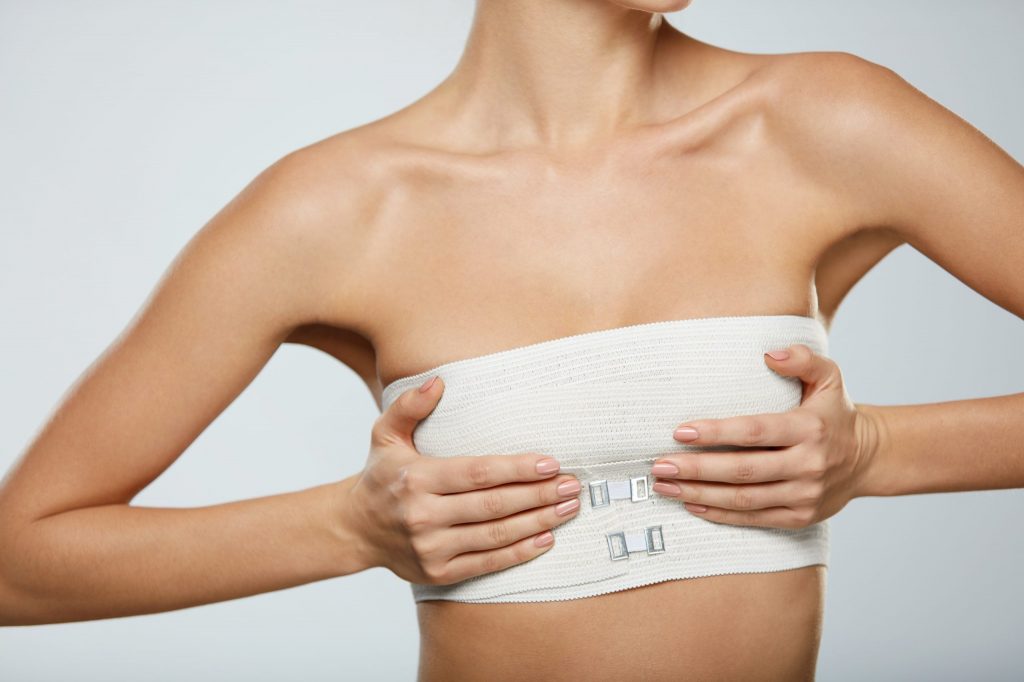Breast Implants Removal Surgery Recovery
Posted on March 10, 2023Removal Surgery Recovery
 Breast implants removal procedure involves surgical removal of old implants, which may be replaced with new implants of same or different size and type, or not replaced at all. The procedure may be similar to that of the original breast augmentation surgery, or in some cases it may be more complicated, depending on whether there are capsules to be removed, pockets to be tightened up, or breast tissue to be lifted.
Breast implants removal procedure involves surgical removal of old implants, which may be replaced with new implants of same or different size and type, or not replaced at all. The procedure may be similar to that of the original breast augmentation surgery, or in some cases it may be more complicated, depending on whether there are capsules to be removed, pockets to be tightened up, or breast tissue to be lifted.
For example, if the implant exchange procedure is performed several years down the line, and there is some significant stretching out of the breast skin, the surgeon may recommend a combination of implant exchange surgery and breast lift.
For women who are having their implants removed, and not replaced – the choice of recommended procedures will depend on whether there is any implant leakage, whether there is any abnormal capsule, and whether or not the patient wants a breast lift. In some cases where all conditions are favorable, all that is required is the straightforward removal of the implant, using the pre-existing breast incision. Even if there is some mild breast droop, a lift can be done, if desired, at a second stage.
Post-surgery Steps
Once the surgeon completes the breast implant exchange procedure, the staff will shift the patient to a dedicated recovery area for observation. The breasts will have a bandage over the incision and the surgeon will provide a surgical post-op bra for support during the initial weeks. The patient will usually be able to go back home in a few hours after the procedure. If capsule work was performed, there may be drain tubes. As in the case of original breast augmentation or breast lift procedure, the surgeon will provide detailed post-op care instructions to the patient.
Most instructions will remain the same, but if the implant exchange surgery is more complicated, a few extra days of rest and more precautions may be advised. Your surgeon will typically prescribe pain medications for a few days and antibiotic treatment to minimize the risk of infection during recovery. They will also provide a date for the first follow-up visit to his office.
First Two Weeks
In the first week, the patient will experience mild pain and discomfort in the treated area, which can be managed with anti-inflammatories, pain medications or muscle relaxants. The swelling will be more visible in the first week, but will start reducing significantly from the second week onward. In about 10 days from the date of surgery, many patients feel pretty good. Follow the surgeon’s advice about return to their workplace or resumption of normal routines.
However, lifting of heavy weights or performing any such movement or exercise that puts undue strain on the area of incisions should be avoided for at least one month. Patients who had a pocket closure technique, also known as pocket plication, should avoid vigorous exercise until the surgeon gives them the OK. This may be more like three months after surgery.
With complex revisions, the final shape may take several months to “settle in”. Your surgeon can advise you on what to reasonably expect, depending on the details of your revisional procedure.
For More Information on the Treatments and Procedures offered, contact award winning Board Certified Plastic Surgeon Dr. Thomas Fiala at Fiala Aesthetics in Greater Orlando to Schedule Your Consultation:
Voted the #1 Best Plastic Surgeon in Orlando, Florida by the readers of Orlando Magazine.



